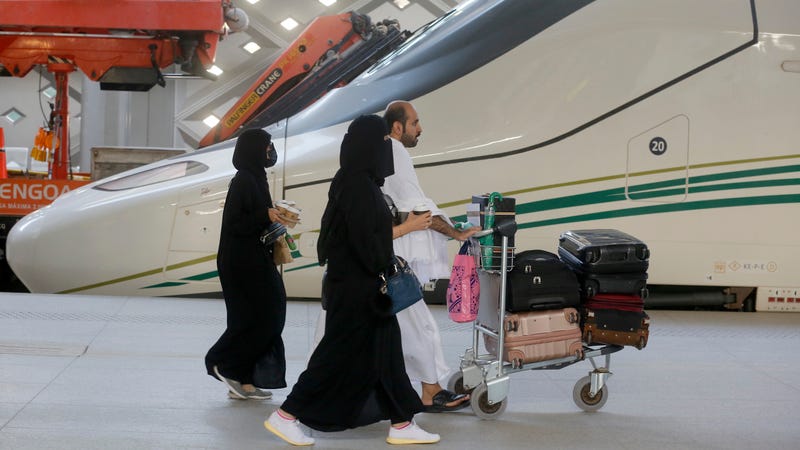
For centuries, the yearly Hajj pilgrimage to Mecca has been a massive logistical undertaking. Pilgrims have long piled into buses for overland journeys from India, onto ships for crossings of the Red Sea from Egypt, and into specially chartered planes arriving at temporary outdoor terminals. This year, though, a new option is available. On the way to circle around the Kabaa, pilgrims can take the Haramain High Speed Rail line.
Muslims the world over consider a trip to Mecca during these five days each year to be a life-long aspiration, and with international travel in the Jet Age allowing more and more pilgrims to visit Mecca, crowding has become a major safety concern. According to PBS, over 3 million pilgrims arrive each year, visiting a number of sites held sacred by Muslims the world over.

To help avoid past tragedies caused by crowding, the Saudi government has already put a local rail system in place. The Al Mashaaer Al Mugaddassah Metro line, opened in 2010, can transport more than 72,000 people an hour, greatly improving the flow of pilgrims to and from the central sites.
Advertisement
Now, though, as the Saudi government continues to develop Mecca, with giant hotels built to accommodate a growing Ummah, or worldwide Muslim community, a new solution was needed to get pilgrims from the airports in Jeddah and Medina to Mecca.
Advertisement
Another train line, the Hejaz Railway, was once built to connect pilgrims (from Turkey and the Levant in this case) with Mecca, though World War I prevented the line from reaching the city and the line ended at Medina. After the war, the fall of the Ottoman Empire and the division of the region into spheres of influence that were less than conducive to infrastructure development meant that Mecca would remain unconnected from rail service despite being one of the most important destinations on the planet.
Advertisement
That is, until the Haramain High Speed Rail line opened last year. The Saudi government enlisted a consortium of Saudi, Chinese and Spanish companies to build the line, which uses technology already in use in Spain’s AVE network of fast trains and features stations designed by Foster + Partners.International Railway Journal reports that the system incorporates special features like blowers by the trucks to keep sand away to help the trainsets cope with desert conditions at their 300 kph top speed, and that a special set of cars has been set aside for use by the Saudi Royal Family.
Advertisement
The international nature of this project has raised questions about the ethics of doing business in Saudi Arabia, whose already weak reputation for human rights has been shaken even more by the death of Jamal Khashoggi. In the wake of Khashoggi’s death, Norman Foster, whose architecture firm designed the stations for this project, removed himself from an advisory board for another Saudi infrastructure project. Though no partners appear to have left this project, and much of the infrastructure is designed to be maintained by local Saudi entities, questions remain about whether or not similar projects that require substantial international support will continue.

















